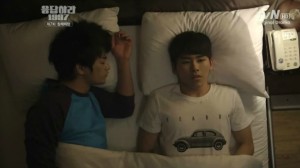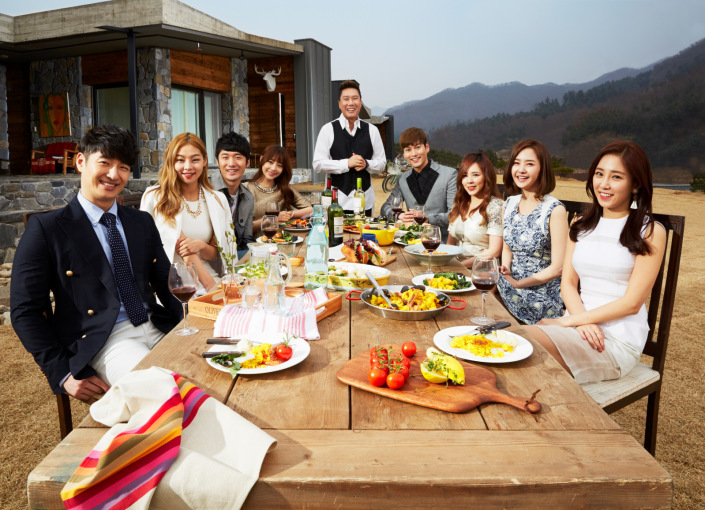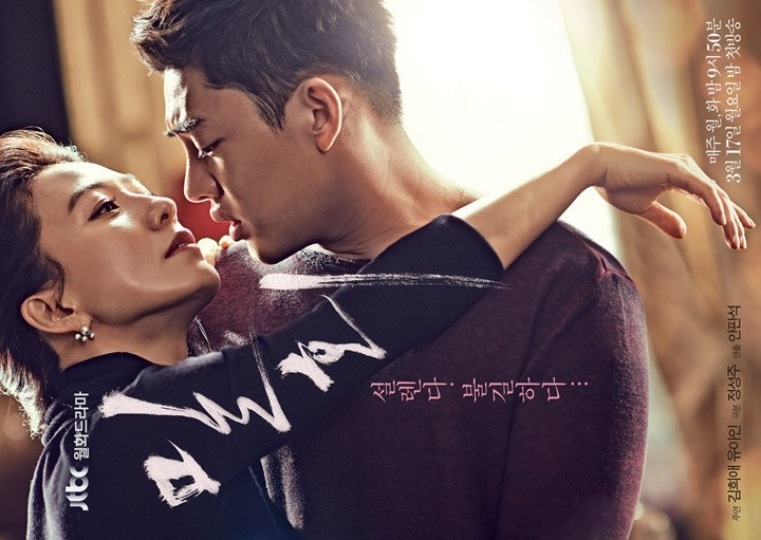 For those of you lovely people out there following the pretty-loaded I Need Romance 3, I’m sure you’re enjoying the parade of ethereal jawlines as much as I am. More than anything, however, tvN’s I Need Romance 3 franchise has distinguished itself as a cable series that portrays societal perceptions of romance and sex with a delicate balance of realism, nuance and sensitivity.
For those of you lovely people out there following the pretty-loaded I Need Romance 3, I’m sure you’re enjoying the parade of ethereal jawlines as much as I am. More than anything, however, tvN’s I Need Romance 3 franchise has distinguished itself as a cable series that portrays societal perceptions of romance and sex with a delicate balance of realism, nuance and sensitivity.
Thus far, the series has portrayed cohabitation, one-night stands, single motherhood, and a generally liberal attitude towards sex. Many of these still carry with them negative connotations, often ingrained within the Korean wording itself – single mothers in Korea are described as mihonmo, which directly translated means “unwed mother.”
It’s interesting to see the dichotomy between broadcast and cable dramas when it comes to the willingness to push the envelope in discussing these societal issues. Everyone knows everyone sleeps around, particularly in the increasingly cosmopolitan city of Seoul. It’s just that when the repercussions of this free sexual behaviour (babies out of wedlock) or the word of your amorous affairs gets around – particularly for women – then you’re toast.
Broadcast dramas often reflect societal perception in that they direct the end of these affairs towards the status quo happy ending: marriage (see Ojakkyo Brothers). While dramas such as I Need Romance 3 may not necessarily have a completely different end point, Min-jung in said show has a great character moment where she decides to keep the baby (a product of a one-night stand), single motherhood and social stigma be damned.
 It’s very satisfying to watch, because the drama did such a great job of building up her character – worldly, materialistic, commitment-phobic. But here she is, taking responsibility for her actions. Regardless of whether one thinks marriage is the necessary conclusion to unwed pregnancy, the drama does a great job of allowing us to empathise with Min-jung as she makes a decision unconventional with societal norms. She is portrayed as wanting to remodel her character to deal with additional responsibility in her life, which has us wanting to root for her.
It’s very satisfying to watch, because the drama did such a great job of building up her character – worldly, materialistic, commitment-phobic. But here she is, taking responsibility for her actions. Regardless of whether one thinks marriage is the necessary conclusion to unwed pregnancy, the drama does a great job of allowing us to empathise with Min-jung as she makes a decision unconventional with societal norms. She is portrayed as wanting to remodel her character to deal with additional responsibility in her life, which has us wanting to root for her.
I’m not certain that broadcast dramas would have allowed for such moral ambiguity – broadcast dramas often paint value-laden situations in sweeping swathes of black and white. You’re either bad or not for doing or not doing something. This can be partially attributed to the fact that broadcast dramas, being free-to-air, rely more than cable dramas on ratings and mass audience approval to ensure the financial sustainability of the channels.
But the survival of cable channels is less contingent of widespread audience approval as it is on a large enough group of people who’re willing to pay to watch their programmes. Perhaps as a result of this, the programming on cable television tends to be more willing to deal with the grey – they don’t need everyone to like them, enough paying viewers will do.
Another example of this would be the acclaimed Answer Me series, also by tvN, which offered a sensitive and generous portrayal of homosexuality and sexual ambiguity. Unconventional sexual orientations remain flash points in Korean society, which might explain why broadcast channels often stick to safe, heterosexual-couple focused portrayals instead.
 But what the Answer Me series did was avoid passing value judgement on sexual orientation. Instead, they simply portrayed gay and sexually ambiguous characters as characters who are as confused and struggle as much with their feelings as everyone else. This portrayal allowed for audience empathy with the characters and gain a greater understanding of their struggles, which are definitively human. Such use of programming was a much more positive method of encouraging acceptance and tolerance than high-handed rhetoric, which often serves to alienate and distance rather than promote understanding.
But what the Answer Me series did was avoid passing value judgement on sexual orientation. Instead, they simply portrayed gay and sexually ambiguous characters as characters who are as confused and struggle as much with their feelings as everyone else. This portrayal allowed for audience empathy with the characters and gain a greater understanding of their struggles, which are definitively human. Such use of programming was a much more positive method of encouraging acceptance and tolerance than high-handed rhetoric, which often serves to alienate and distance rather than promote understanding.
Instead of aggressively forcing ideology down the public’s throats, the series sought to encourage audiences to feel with its characters. This was more socially acceptable than the methods used by LGBT-rights groups around the world – stridently assertive pride parades, speeches, large-scale rallies. The “soft” approach worked better here. Perhaps there’s no direct causation involved, but we can see that in today’s Korea, societal perception towards alternative sexual orientations is beginning to shift: organic youth-led movements seeking to promote LGBT tights are emerging, reflecting a shift in thinking among the young.
 Cable channels are definitely beginning to come into their own regarding exploring societal issues that broadcast channels lack the audience certainty to air. This seems promising both for the industry and for consumers. This trend offers a subtle niche for cable to thrive in and avoid direct competition in terms of content with broadcast: consumers have a greater variety of programming to choose from, and are also exposed to thoughtful depictions of societal issues not often discussed openly.
Cable channels are definitely beginning to come into their own regarding exploring societal issues that broadcast channels lack the audience certainty to air. This seems promising both for the industry and for consumers. This trend offers a subtle niche for cable to thrive in and avoid direct competition in terms of content with broadcast: consumers have a greater variety of programming to choose from, and are also exposed to thoughtful depictions of societal issues not often discussed openly.
The media is definitely powerful in that it has greater license to present these issues unconventionally under the banner of creative artistry, and cable programming is definitely doing that for Korean and international audiences. I, for one, am definitely looking forward to more such excellent programming; how about you?
(Star News, TRACK, Images via Sports Hankook, tvN)


